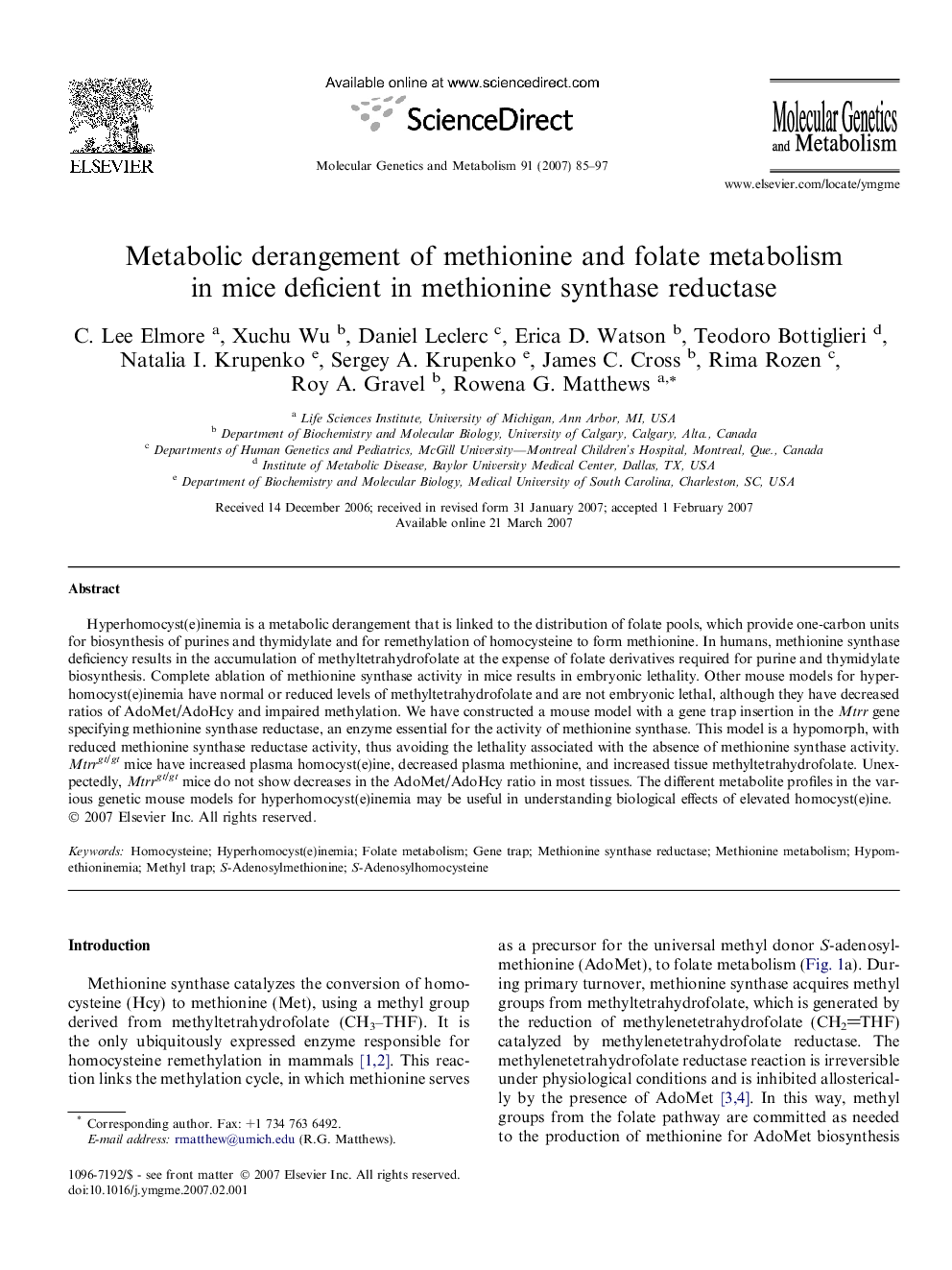| Article ID | Journal | Published Year | Pages | File Type |
|---|---|---|---|---|
| 2000130 | Molecular Genetics and Metabolism | 2007 | 13 Pages |
Hyperhomocyst(e)inemia is a metabolic derangement that is linked to the distribution of folate pools, which provide one-carbon units for biosynthesis of purines and thymidylate and for remethylation of homocysteine to form methionine. In humans, methionine synthase deficiency results in the accumulation of methyltetrahydrofolate at the expense of folate derivatives required for purine and thymidylate biosynthesis. Complete ablation of methionine synthase activity in mice results in embryonic lethality. Other mouse models for hyperhomocyst(e)inemia have normal or reduced levels of methyltetrahydrofolate and are not embryonic lethal, although they have decreased ratios of AdoMet/AdoHcy and impaired methylation. We have constructed a mouse model with a gene trap insertion in the Mtrr gene specifying methionine synthase reductase, an enzyme essential for the activity of methionine synthase. This model is a hypomorph, with reduced methionine synthase reductase activity, thus avoiding the lethality associated with the absence of methionine synthase activity. Mtrrgt/gt mice have increased plasma homocyst(e)ine, decreased plasma methionine, and increased tissue methyltetrahydrofolate. Unexpectedly, Mtrrgt/gt mice do not show decreases in the AdoMet/AdoHcy ratio in most tissues. The different metabolite profiles in the various genetic mouse models for hyperhomocyst(e)inemia may be useful in understanding biological effects of elevated homocyst(e)ine.
